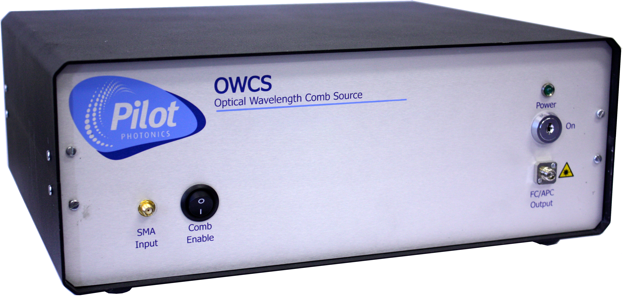Photonic Integration is a state-of-the-art technique that combines multiple optical functions on a single photonic chip, and that is analogous to the development of microchips in the 1960s which combined multiple electronic functions on a single silicon chip.
The use of photonic integration drives huge efficiencies in cost, footprint, power consumption and performance. Pilot Photonics has developed the world’s only photonic integrated comb laser.
Optical comb sources are a class of laser that generate multiple wavelengths, or in the time domain, a train of short pulses, from a single device. In 2005 a Nobel Prize in Physics was awarded jointly to John L. Hall and Theodor W. Hänsch “for their contributions to the development of laser-based precision spectroscopy, including the optical frequency comb technique”. Optical combs offer numerous advantages over single wavelength lasers.

For example in telecoms applications they offer the disruptive value proposition of increased performance with reduced cost, footprint and power consumption. For optical sensing, they give the ability to interrogate multiple optical sensors simultaneously, and in biomedical applications, the pulses that are generated can be used to excite tissue samples.
Pilot Photonics uses a patented technique known as gain switching for generating optical combs. Gain switching involves turning a laser on and off in quick succession to create coherent pulses of light, which manifest as discrete wavelengths in the frequency domain. Gain switching is a simple and elegant technique that offers excellent size, cost, flexibility, and stability advantages.
Furthermore, gain switching lends itself very well to photonic integration, a state-of-the-art technique, analogous to integrated circuits in electronics, in which several functions are combined onto a single chip.